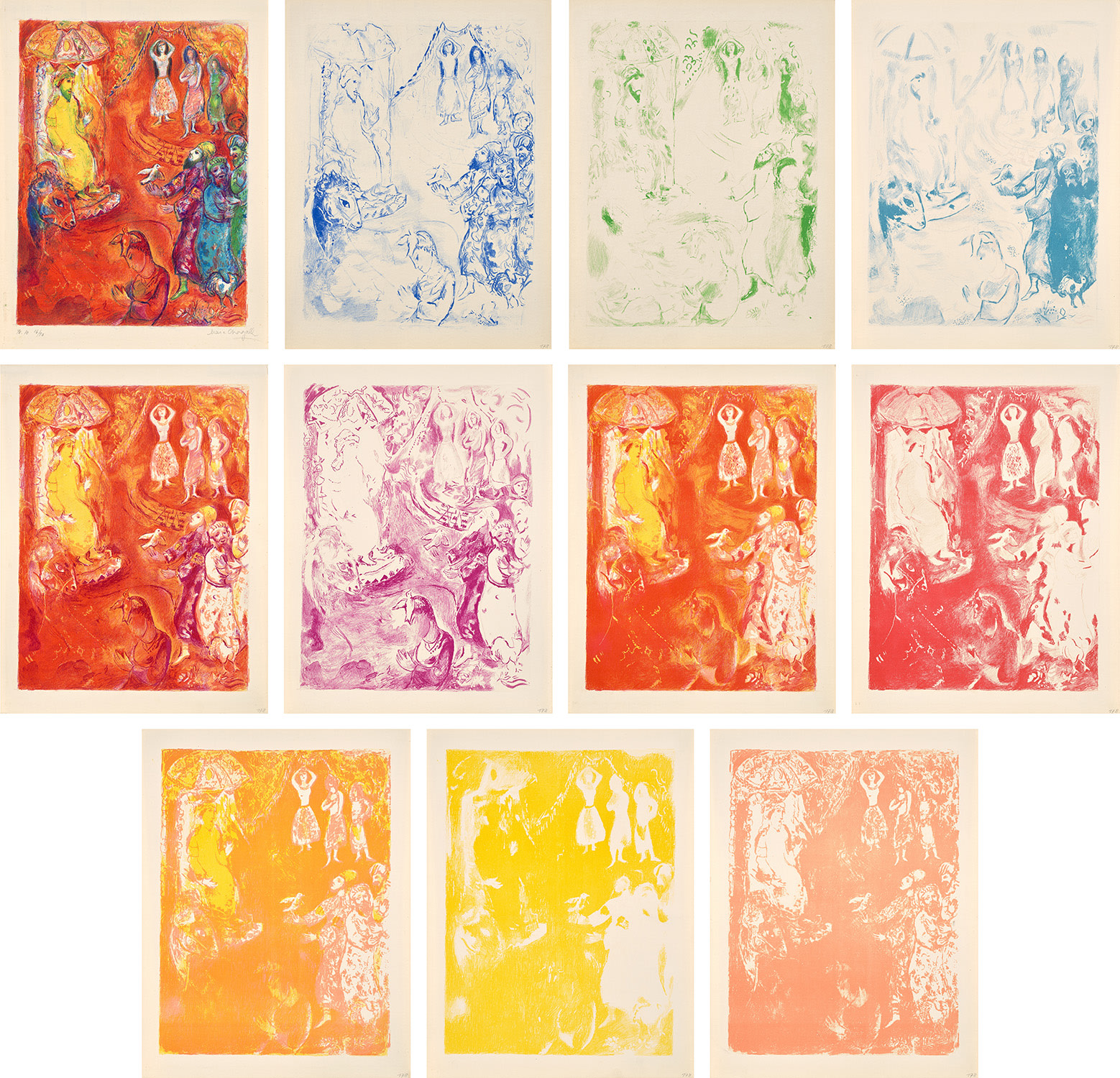
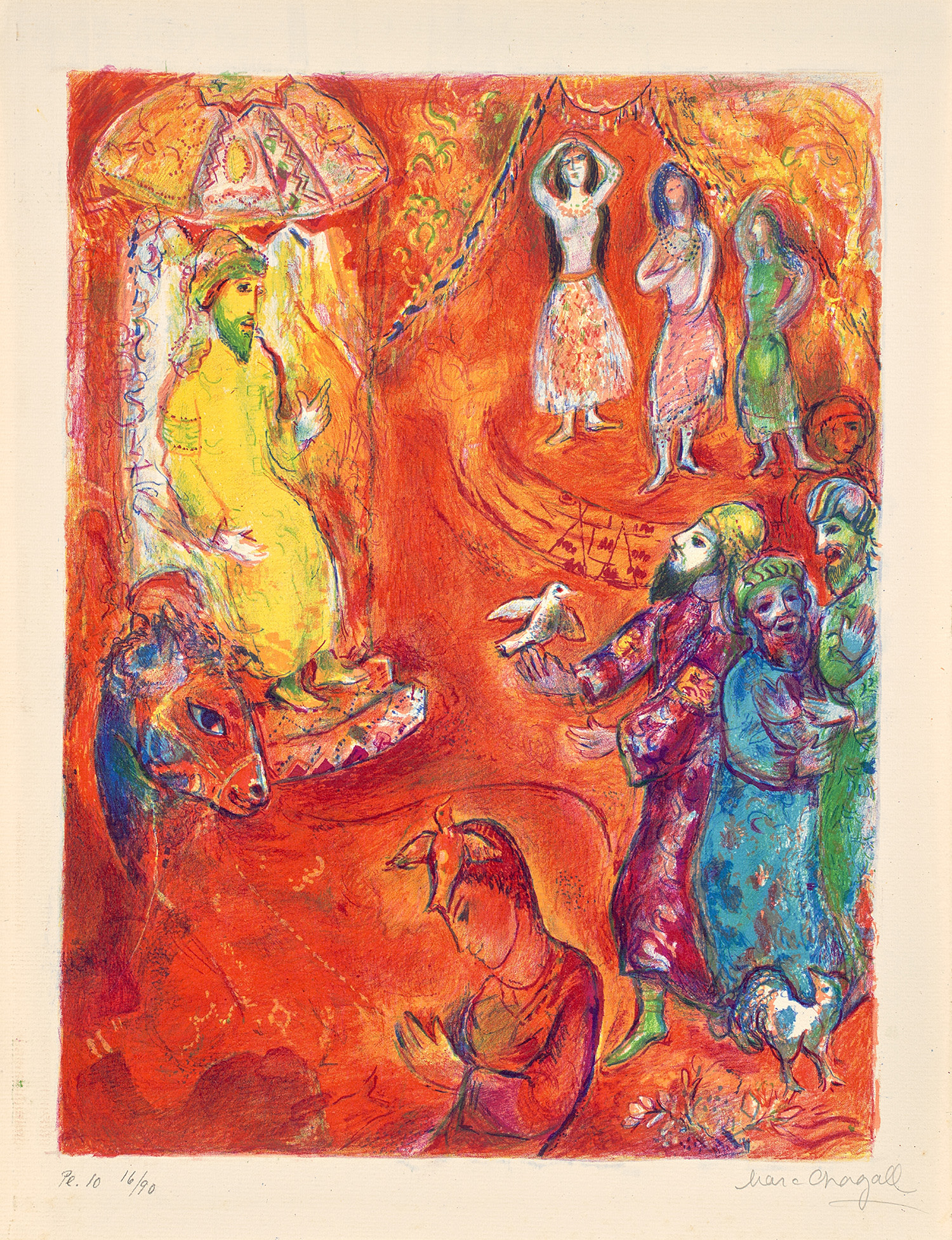
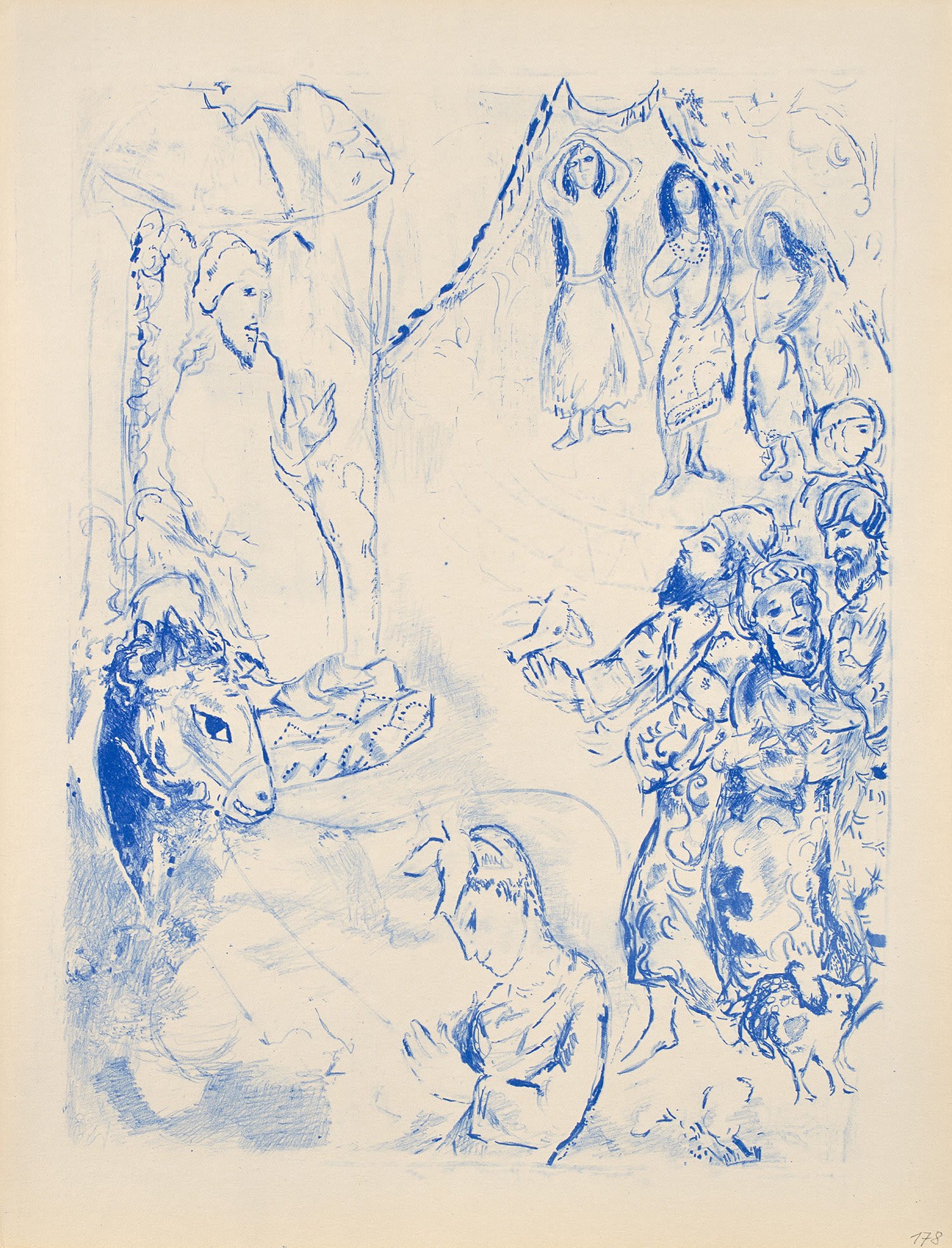
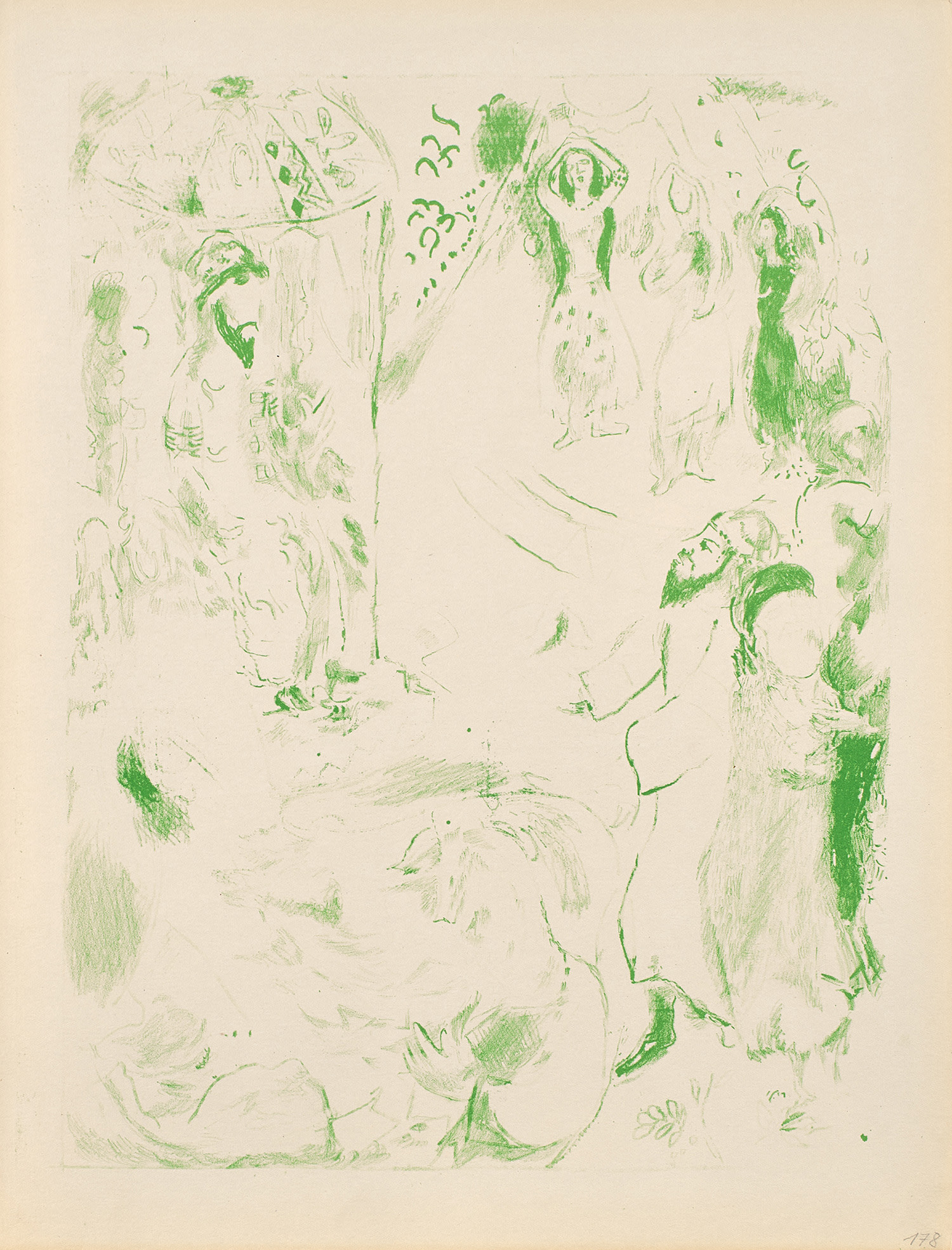
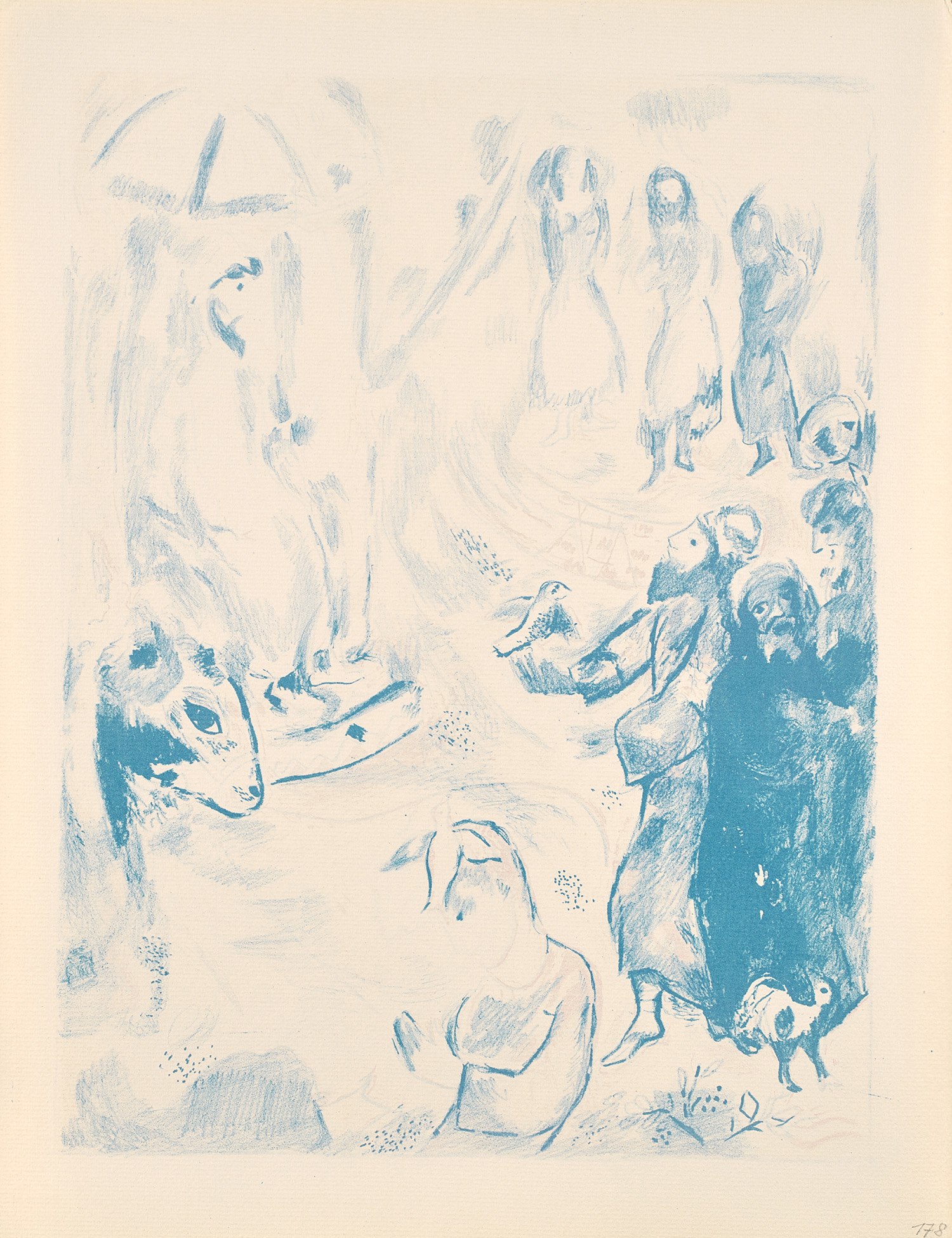
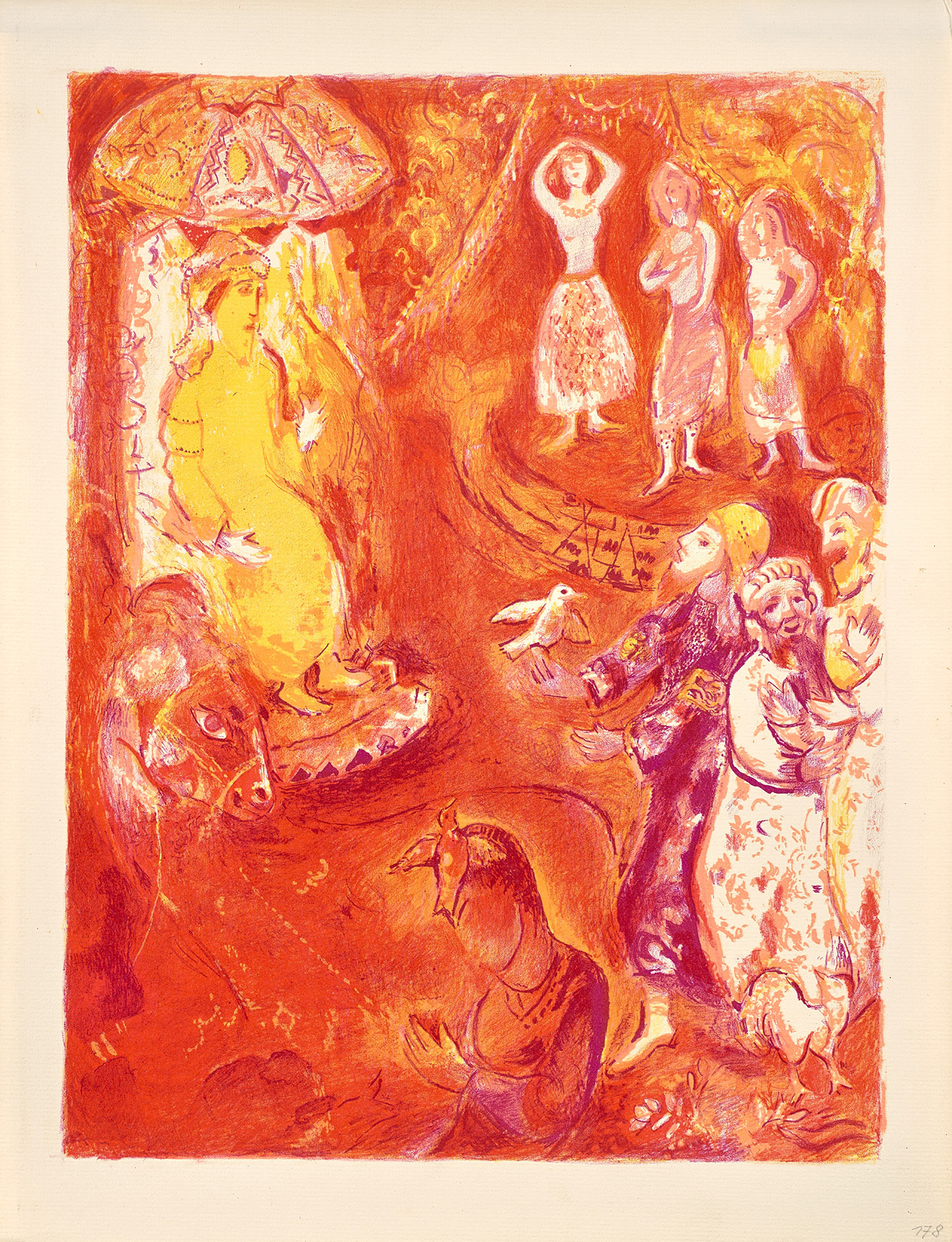
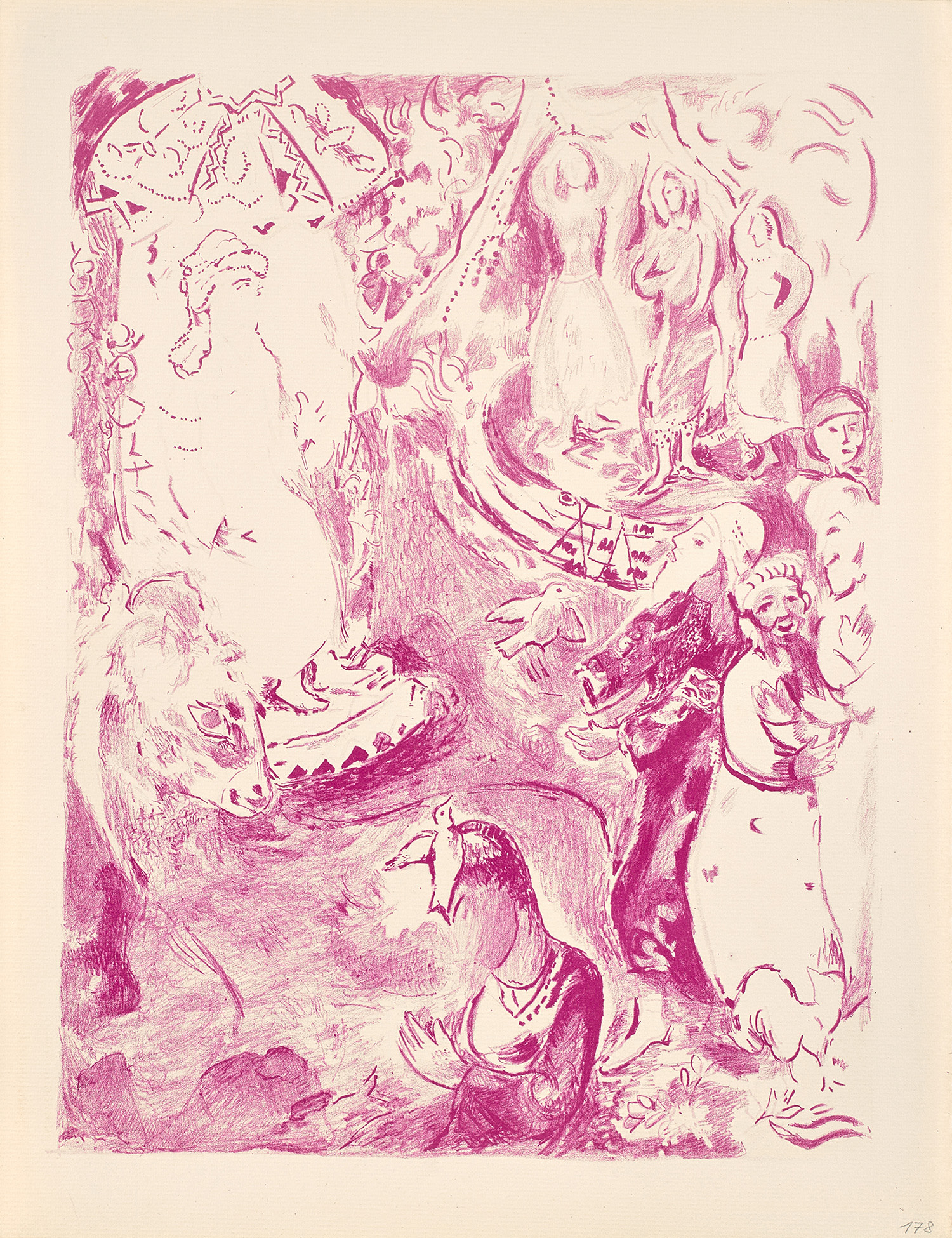
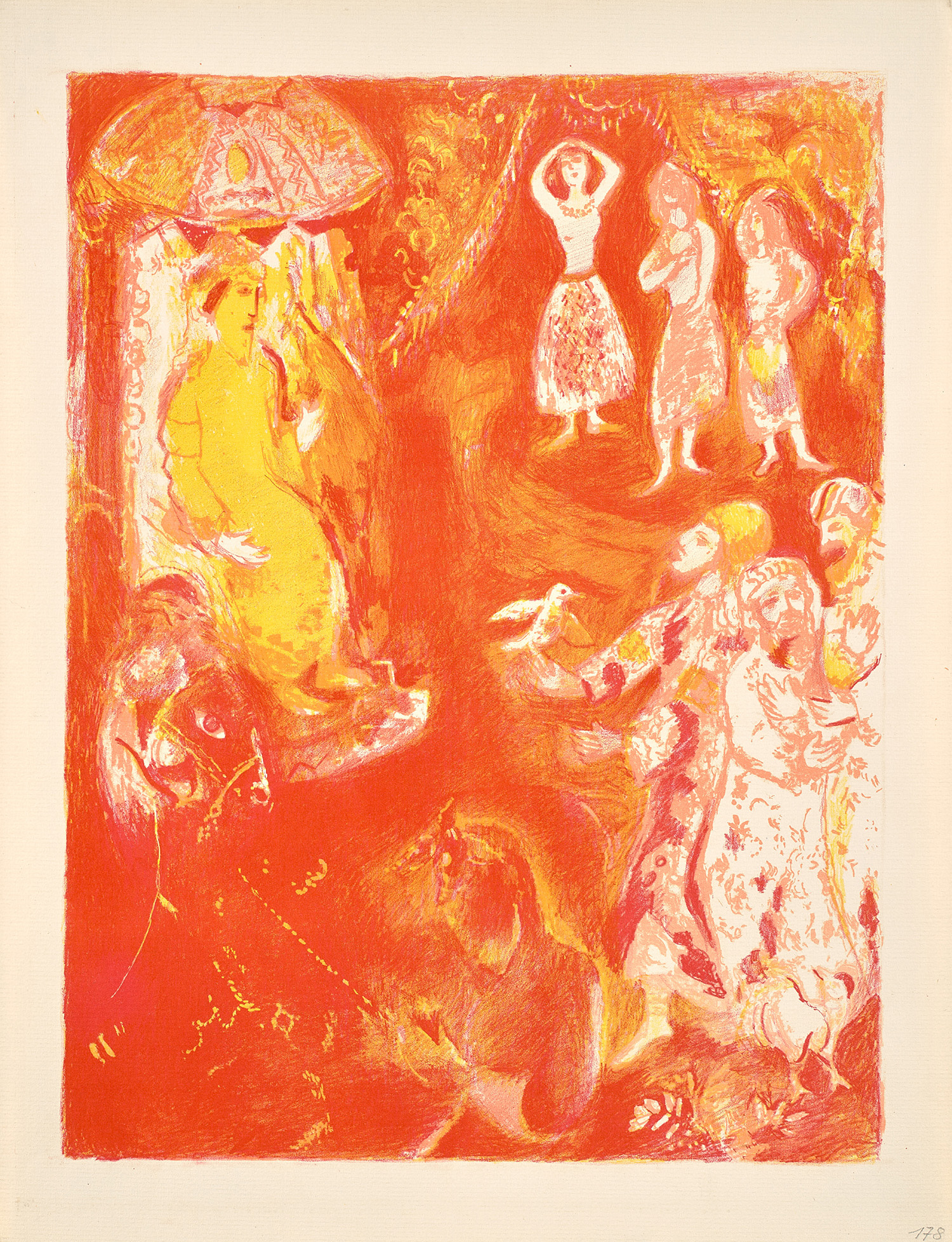

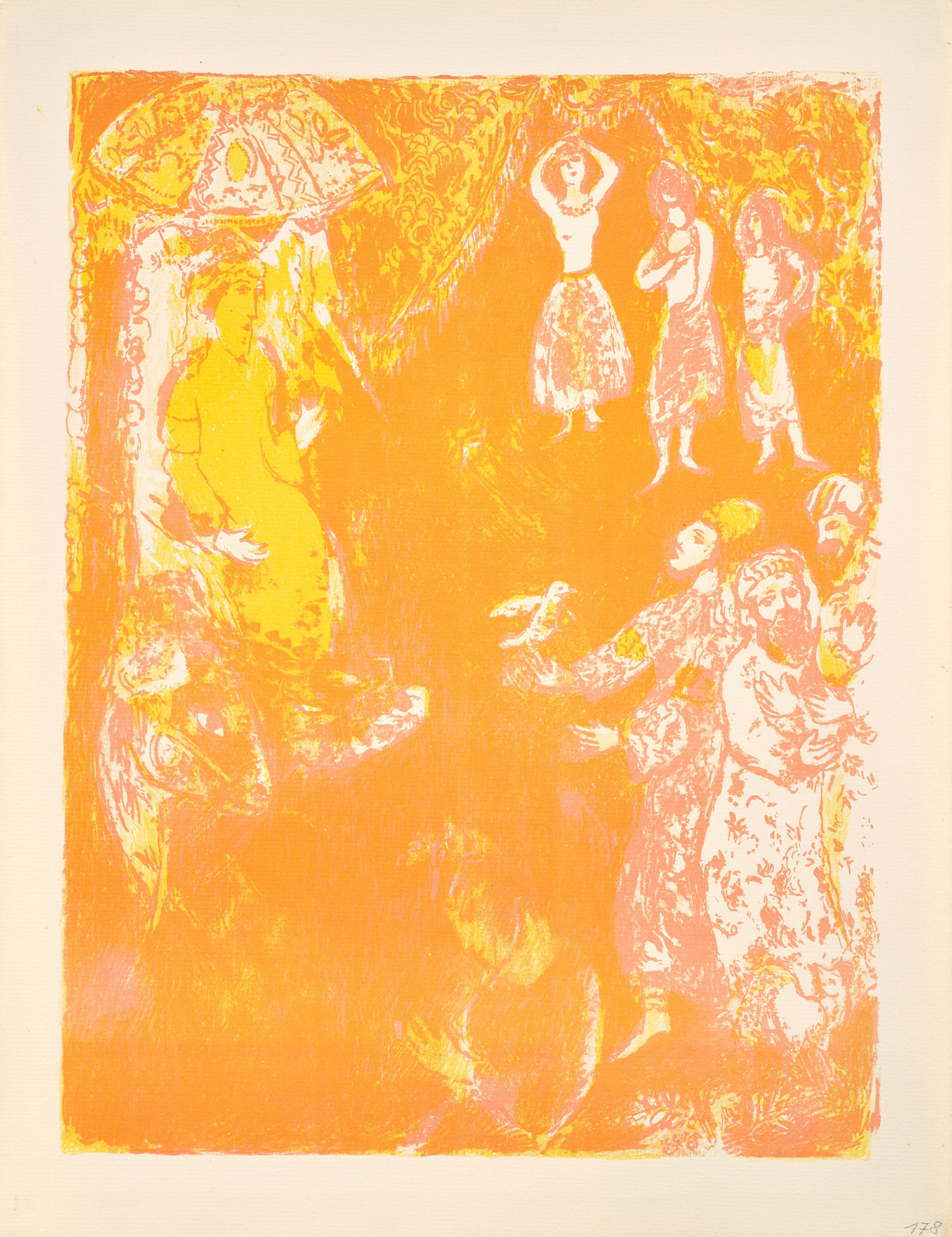
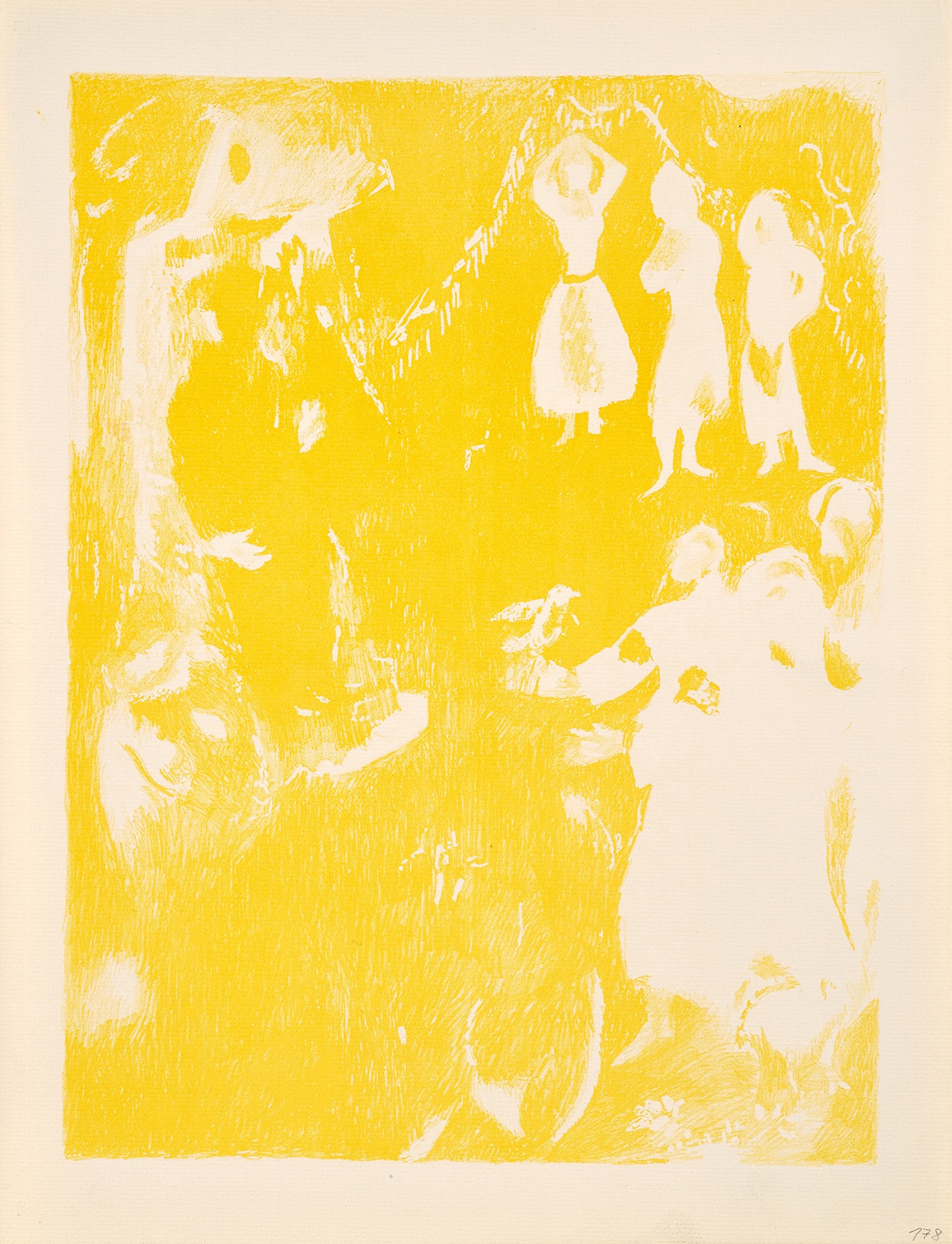
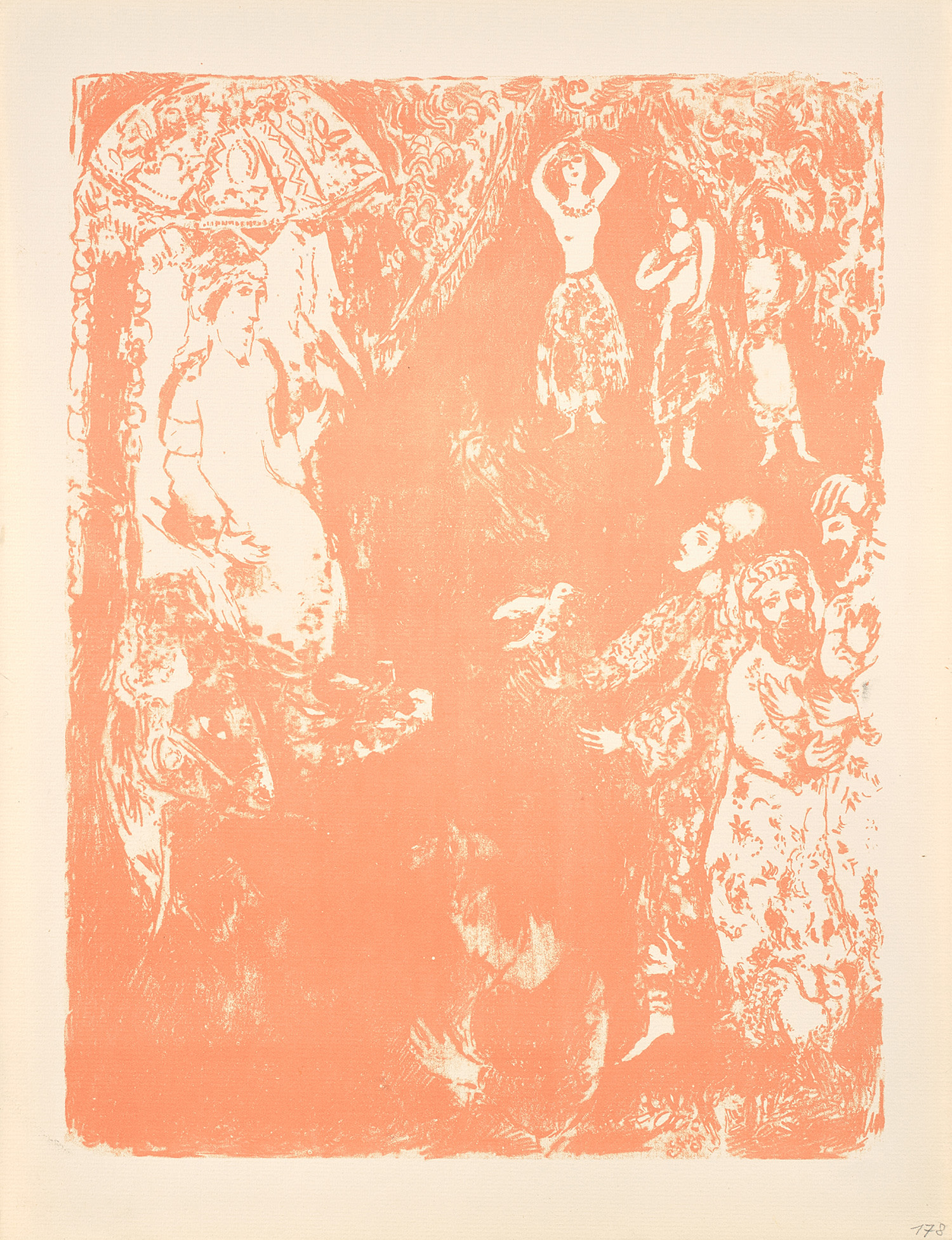
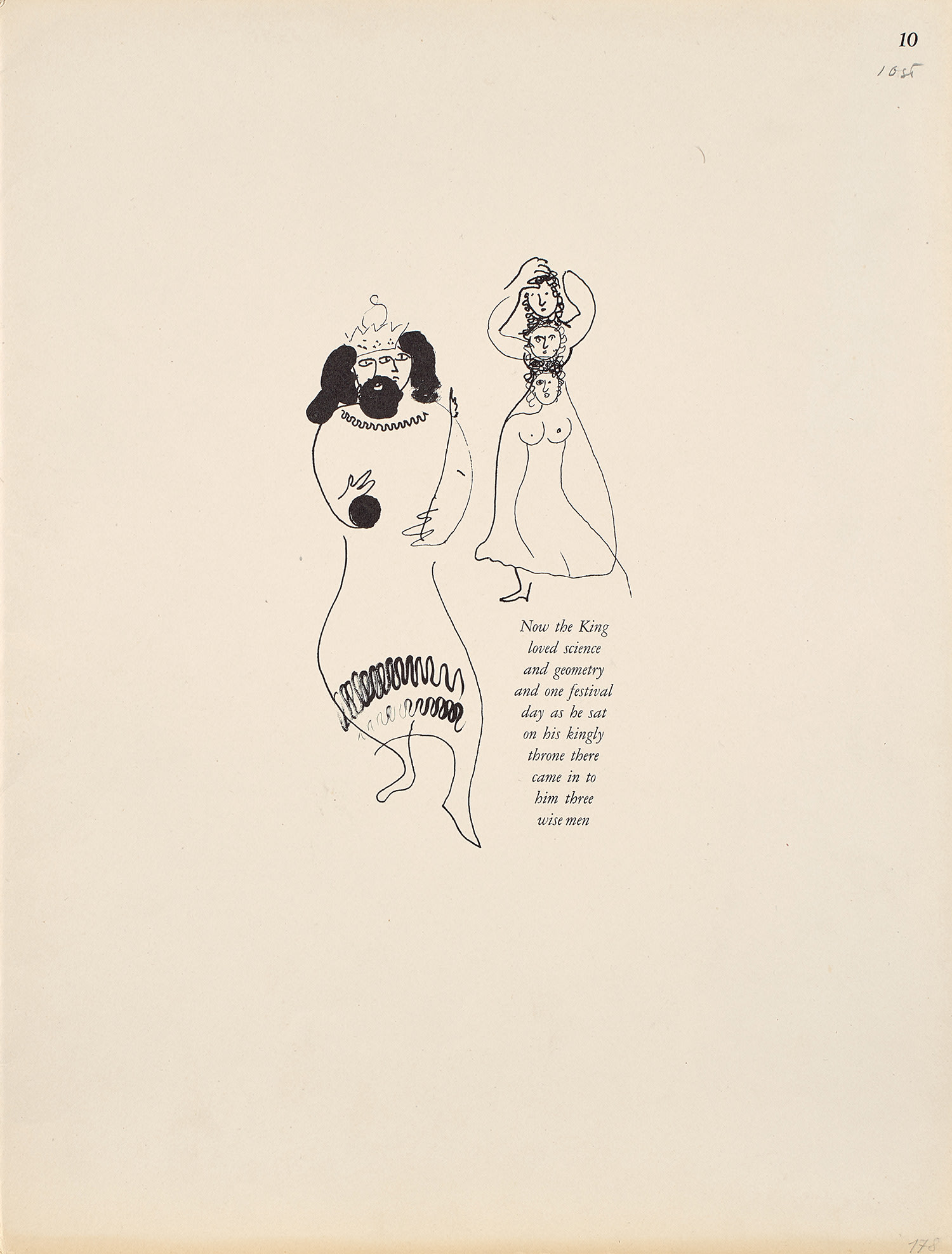













3
Marc Chagall
Now the King loved science and geometry and one festival day as he sat on his kingly throne there came in to him three wise men...: plate 10, from Four Tales from the Arabian Nights: 11 plates (M. 45, see C. bks 18)
1948
Eleven lithographs in colors, including the signed and numbered final state and ten color progressive proofs, on Utopian laid paper, with full margins, the proofs and final state all contained in the original two wove paper folios with lithograph illustrations, folded (as issued).
all I. 14 7/8 x 11 1/4 in. (37.8 x 28.6 cm)
all S. 17 x 13 1/8 in. (43.2 x 33.3 cm)
all S. 17 x 13 1/8 in. (43.2 x 33.3 cm)
The final state signed, annotated 'Pl. 10' and numbered 16/90 in pencil, the 10 color progressive proofs from the deluxe edition of 10 in Roman numerals (there was also an edition of 11 lettered A-K), published by Pantheon Books, New York, printed by Albert Carman, City Island, New York, all unframed.